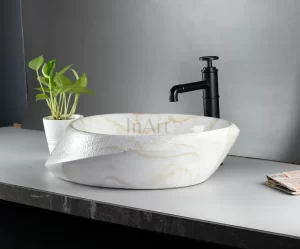
The Benefits of a Kitchen Garden
Kitchen gardens are intended to be part of daily or weekly routines and intended to be both productive and beautiful, helping you eat healthily.
Make your kitchen garden look gorgeous by mixing vegetables and herbs with attractive flowers such as chives or marigolds that act as natural insect deterrents like chives or marigolds, creating visual interest by mixing in different hues – for instance dark green kale and vibrant red chard pair well next to one another.
Design
Kitchen gardens should focus more on providing food into the home than producing mass harvests. An ideal kitchen garden should be easy and accessible while cooking meals.
Garden designers use this type of garden to combine ornamental plants with herbs, vegetables and fruits for an aesthetically pleasing space. Formal beds may be utilized, or it could take the form of Helen’s walled 17th-century kitchen garden with its thorny hedgerows and abundant mixture of flowers and vegetables.
Even without much space available to you, you can still grow a kitchen garden. Any area divvied up into raised beds that you use to grow edibles counts; containers and companion plants such as daylilies and thyme count too! A few espaliered fruit trees also work great as height for plantings that makes harvesting simpler; additionally they help ensure that vegetables get enough direct sunlight in which to thrive.
Planting
Kitchen gardens provide the ideal space for cultivating the vegetables and herbs used regularly in cooking, as well as double as ornamental plants with edible flowers such as thyme and dill providing beautiful borders. Some herbs such as dill and poppies will even self-sow and add even more color and texture in future years!
Helen’s 50x-50 foot layout of symmetrical beds in an enclosed garden room not only offers easy harvesting access but is designed to please the senses as well. Marigolds and calendula not only look lovely, but their presence draws in beneficial insects that deter tomato hornworms and other pests that could threaten vegetable patches – while adding color, fragrance, sound effects and ambience that echo medieval gardeners who created enclosed spaces as places of peace, respite and spiritual contemplation.
Harvesting
Kitchen gardens provide an opportunity to grow edible herbs, leafy greens and vegetables for daily consumption while simultaneously growing flowers that attract pollinators insects. Plant a mix of edibles and flowers so you have something delicious to harvest all year long while giving your garden an eye-catching appearance.
Traditional kitchen gardens were situated close to the home so that their harvest could easily be collected daily for use in meals, eliminating waste while simultaneously giving the garden a sense of belonging to your home.
For minimal maintenance requirements, look to grow plants that are easy to cultivate and pest-proof in dense masses, like herbs. Herbs are great choices because they produce quickly while being adaptable enough for any climate or condition. In order to keep the soil healthy and encourage healthy growth while retaining water effectively. Adding compost or well-rotted manure on an ongoing basis will maintain optimal conditions for healthy soil development as well as ensure its continued water conservation capabilities.
Tending
Kitchen gardens require constant care. Not only is harvesting fresh veggies for meals an experience in itself; seeing seeds germinate and develop over time is fascinating, as is going out three or four times a week to pick herbs or greens for salad or help sugar snap pea tendrils grow onto their trellises.
Your garden should be located close to your home so that it can easily be reached when making marinades or stews, making accessing this garden simpler than ever. Although not showy in appearance, its purpose is clear: providing easy access.
Carefully consider which fruits, vegetables and herbs your family enjoys eating before considering what additional plantings could enhance its value in cooking. Take this chance to review your overall landscape design as well and make any necessary modifications such as creating shaded areas for certain crops.



Average Rating